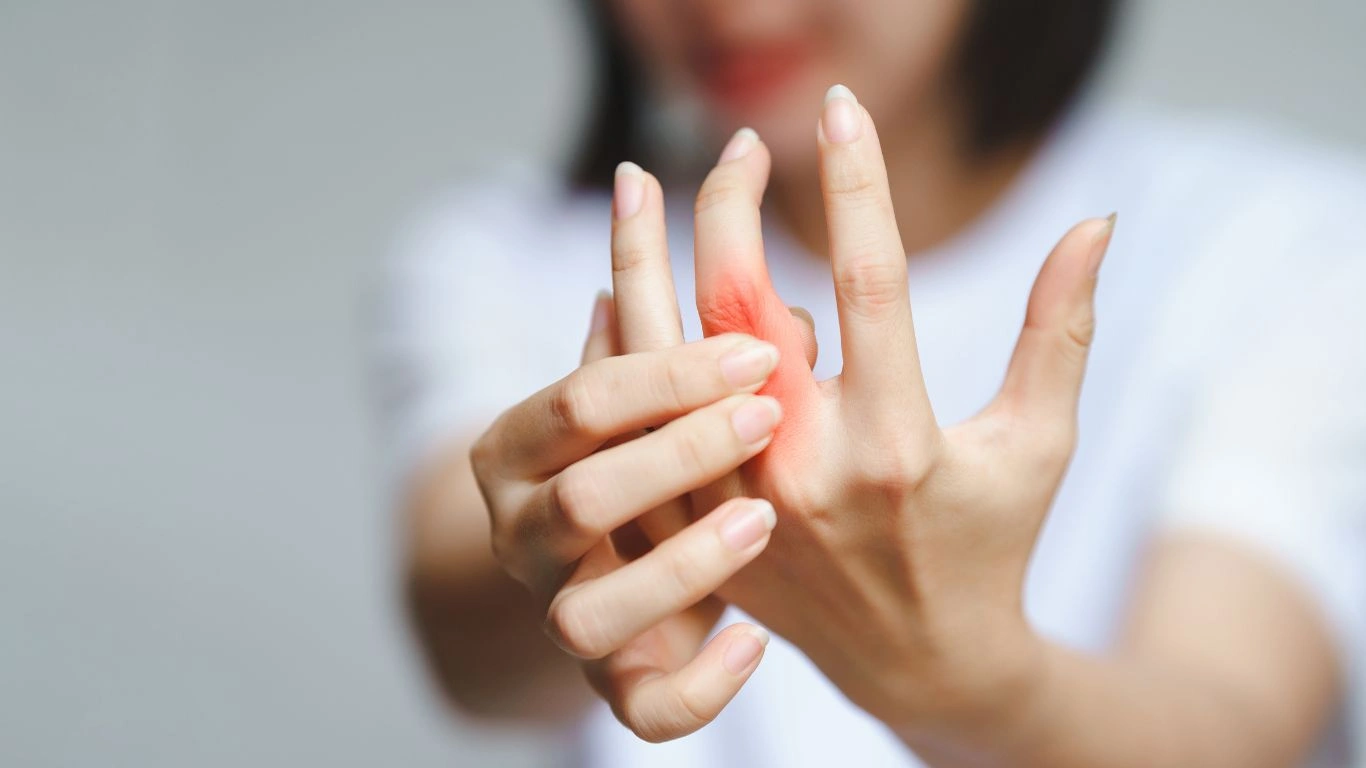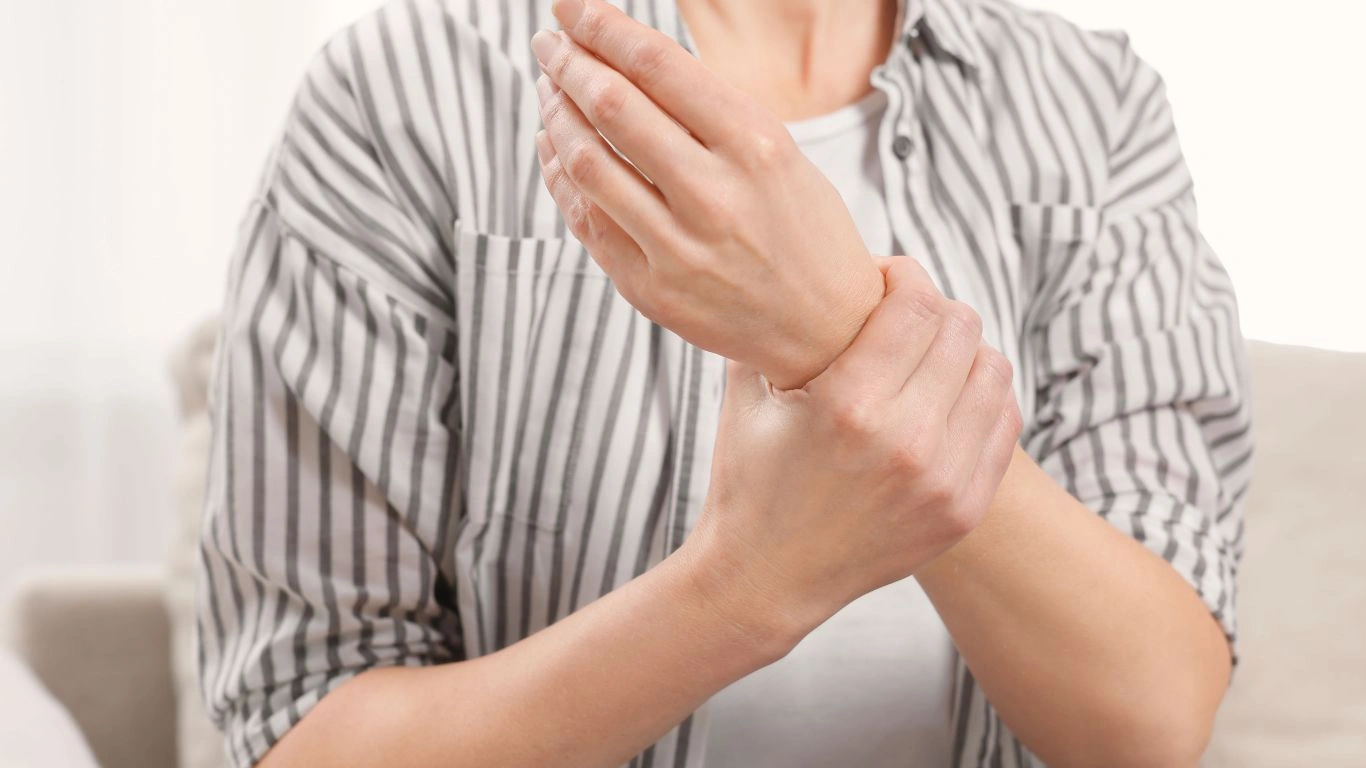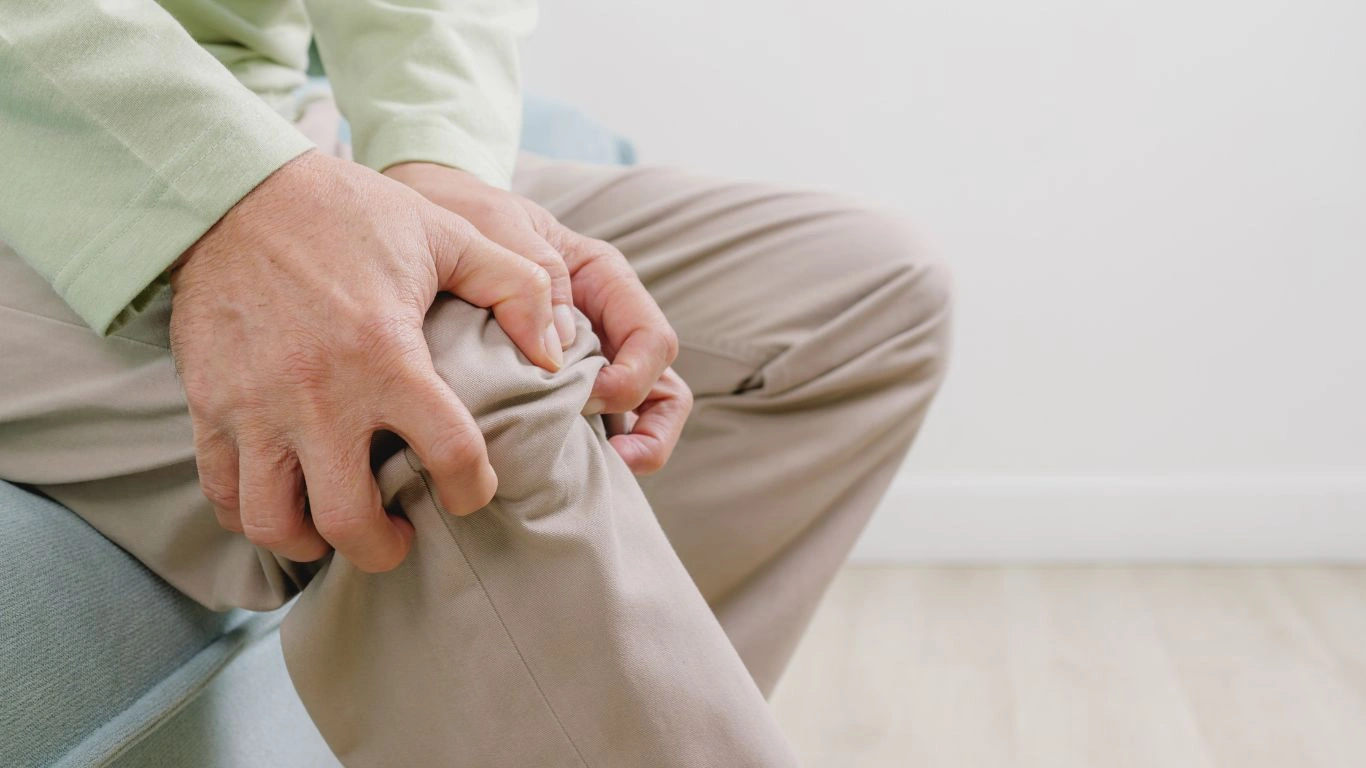Effective Ways to Reduce Rheumatoid Arthritis Joint Pain Fast
If you’ve ever wondered how to reduce joint pain from rheumatoid arthritis, you’re not alone. As a rheumatology nurse practitioner, I’ve seen firsthand how frustrating and exhausting this condition can be. Rheumatoid arthritis (RA) isn’t just about achy joints—it’s an autoimmune disease that can seriously impact your quality of life. But here’s the good news: managing that pain and getting some relief is absolutely possible with the right strategies. Today, I want to share some practical tips and insights based on my experience working closely with patients battling RA every day.
Understanding Rheumatoid Arthritis and Joint Pain

Rheumatoid arthritis is a bit of a tricky beast because it’s not just about wear and tear like osteoarthritis. RA is an autoimmune condition, which means your immune system mistakenly attacks your own joints. This causes inflammation, swelling, stiffness, and, of course, that stubborn joint pain. Knowing this helps us tailor pain reduction strategies that actually address the root cause, not just mask the symptoms.
One of the things I always emphasize to my patients is that managing RA pain is a team effort—it’s about medication, lifestyle, physical therapy, and sometimes even mental health support. Pain can be overwhelming, but by breaking it down and tackling it from multiple angles, you can find what works best for your unique situation.
How to Reduce Joint Pain from Rheumatoid Arthritis: Practical Strategies

1. Medication Management: More Than Just Pills
Medications are the cornerstone of RA treatment. Disease-modifying antirheumatic drugs (DMARDs), biologics, and anti-inflammatories play a vital role in slowing the disease progression and reducing inflammation. But here’s the thing—not every medication works the same for everyone, and sometimes it takes time to find the right combo. I always tell my patients, stick with your rheumatologist and communicate openly about what you’re feeling, especially if pain persists or worsens.
2. Stay Active—but Smartly
It might seem counterintuitive to move when your joints hurt, but staying active is actually one of the best things you can do. Exercise helps keep your joints flexible and muscles strong, which supports those joints and reduces overall pain. I’ve worked with many patients who felt better after incorporating gentle activities like swimming, yoga, or even simple stretching into their daily routine.
Of course, it’s important to listen to your body and avoid pushing through sharp or severe pain. Modifying activities during flare-ups is key. One trick I often suggest is keeping a pain diary to track what movements or exercises trigger discomfort, so you can adjust accordingly.
3. Heat and Cold Therapy: Simple Yet Effective
Sometimes, the easiest solutions can be surprisingly effective. Applying heat, such as warm baths or heating pads, can soothe stiff joints and relax muscles. Cold packs, on the other hand, help reduce swelling and numb sharp pain. Depending on your symptoms, alternating between heat and cold therapy can provide quick relief. Personally, I often recommend this as a go-to method my patients can use at home, especially on tough days.
4. Nutrition and Joint Health
While there’s no magic food cure for RA, certain dietary choices can influence inflammation levels. Incorporating anti-inflammatory foods like fatty fish (think salmon), leafy greens, nuts, and berries can support your overall joint health. I encourage patients to avoid processed foods and excessive sugar, which might worsen inflammation.
Remember, every body reacts differently, so it’s about experimenting and finding a balance that works for you. And if you’re unsure where to start, consulting a nutritionist familiar with autoimmune conditions can be a game changer.
Embracing Lifestyle Changes for Long-Term Pain Relief

1. Prioritize Rest and Sleep
One thing I can’t stress enough from my years in rheumatology is how crucial good rest is for managing RA pain. It might seem obvious, but when you’re dealing with persistent joint pain, getting quality sleep can feel nearly impossible. Inflammation and pain can keep you tossing and turning all night. However, the body really needs rest to repair and reduce inflammation naturally.
Creating a sleep-friendly environment — think comfy mattresses, cool room temperature, and minimizing screen time before bed — can make a huge difference. I also suggest trying relaxation techniques like deep breathing or gentle yoga stretches before bedtime. These small adjustments have helped many of my patients wake up feeling less stiff and more ready to face the day.
2. Stress Management: A Surprising Ally
You might not immediately link stress with joint pain, but in my clinical experience, emotional stress can actually trigger flare-ups or make pain feel worse. When the body is stressed, it releases chemicals that can heighten inflammation, which we definitely want to avoid.
That’s why finding ways to manage stress isn’t just good for your mental health — it’s also an important part of reducing RA joint pain. Meditation, mindfulness, even hobbies you enjoy can provide relief. I’ve seen patients turn to creative outlets like painting or gardening as powerful tools to lower stress levels and ease symptoms.
Physical Therapy and Assistive Devices: Support Your Joints

1. Working with a Physical Therapist
Physical therapy often flies under the radar but it’s one of the best ways to reduce joint pain from rheumatoid arthritis long-term. PTs design personalized exercises that not only improve joint mobility but also strengthen the muscles around affected joints, reducing strain and pain.
From experience, I recommend patients seek out therapists who specialize in autoimmune or inflammatory conditions because they truly understand the delicate balance between movement and rest. Plus, they can teach you techniques to protect your joints during daily activities, which can prevent further damage.
2. Using Assistive Devices
Simple tools can make a big difference in everyday life. Splints, braces, or ergonomic gadgets can help support joints, reduce pain, and improve function. I’ve noticed that many patients feel more confident and independent once they incorporate these devices—whether it’s a special jar opener or cushioned gloves.
Don’t hesitate to talk with your healthcare provider about assistive devices. They’re not a sign of weakness but smart adaptations that protect your joints and make your daily routine easier.
Alternative Therapies: What Works and What to Watch Out For

1. Acupuncture and Massage Therapy
I often get asked about alternative treatments like acupuncture or massage for RA pain. While these aren’t cures, they can provide relief by promoting circulation and easing muscle tension around inflamed joints. Many of my patients report feeling relaxed and experiencing less stiffness after sessions.
That said, it’s important to choose licensed practitioners who understand rheumatoid arthritis and its impact on the body. Some techniques might not be appropriate during flare-ups or for severely swollen joints.
2. Supplements: Proceed With Caution
Supplements like fish oil, turmeric, and vitamin D have gained popularity for their anti-inflammatory properties. I’ve seen some positive outcomes, especially with omega-3 fatty acids, which can help reduce joint tenderness and stiffness.
But here’s the key—never start supplements without discussing them with your healthcare provider. Some can interact with your medications or cause side effects, so it’s better to be safe than sorry. A tailored approach is always best.
Building Your Personalized Pain Management Plan
After working with countless RA patients, one lesson stands out: there’s no one-size-fits-all approach. Your journey to reducing joint pain is personal, and it evolves over time. Combining medication, lifestyle tweaks, physical therapy, and even alternative options under professional guidance gives you the best shot at relief.
If you’re just starting out, don’t feel overwhelmed. Start small—try gentle exercises, experiment with heat and cold, and be open about your symptoms with your care team. Over time, you’ll discover what truly helps your body feel better and keeps joint pain at bay.
Mindset Matters: Coping with the Emotional Side of Rheumatoid Arthritis

Living with rheumatoid arthritis isn’t just about managing physical pain — it’s also a daily challenge emotionally and mentally. From my experience working with patients, the emotional toll can sometimes feel just as heavy as the joint pain itself. Anxiety, frustration, and even depression can sneak in, especially during flare-ups when pain and limitations peak.
I always encourage people to be kind to themselves. It’s perfectly normal to have days where you feel down or overwhelmed. What’s important is finding ways to build resilience and maintain a positive outlook, which can actually help reduce the perception of pain. One patient once told me, “If I’m stressed about the pain, it feels ten times worse.” That stuck with me, because it’s so true.
Building a Support Network
No one should have to go through RA alone. Connecting with others who understand what you’re experiencing can make a huge difference. Whether it’s a support group, close friends, family, or even online communities, having a network to vent to, share tips with, or just feel understood is invaluable. I often recommend my patients explore local or virtual support groups—sometimes just knowing someone else “gets it” can lift a huge weight.
Therapy and Counseling
If the emotional side of RA starts to feel overwhelming, don’t hesitate to seek professional help. Mental health professionals can offer coping tools, cognitive behavioral therapy (CBT), and stress management techniques tailored to chronic illness. I’ve seen patients improve their pain management significantly just by addressing their mental well-being alongside physical symptoms.
Practical Daily Tips to Minimize Joint Pain

Small Changes That Make a Big Difference
From personal experience, it’s often the little everyday adjustments that add up to meaningful pain relief. Here are a few simple yet effective tips I’ve shared with patients over the years:
- Use proper posture: Sitting and standing with good alignment reduces unnecessary stress on your joints.
- Break tasks into smaller steps: Don’t overdo it in one go. Spread out activities and take breaks.
- Wear supportive footwear: Shoes with good cushioning help absorb shock and support joints, especially knees and hips.
- Use ergonomic tools: Whether it’s kitchen utensils or computer accessories, ergonomic designs help reduce joint strain.
- Stay hydrated: Water supports joint lubrication and overall health.
Listening to Your Body
One piece of advice I can’t emphasize enough is learning to listen to your body’s signals. RA flare-ups can be unpredictable, so pacing yourself and recognizing early signs of increased pain or stiffness helps prevent worsening symptoms. Resting when needed and avoiding pushing through intense pain can save you from setbacks.
The Role of Regular Check-Ups and Communication
Staying on top of your health with regular appointments and open communication with your rheumatology team is vital. As someone deeply involved in patient care, I’ve witnessed how proactive management makes all the difference. Lab tests, imaging, and medication adjustments keep the disease in check and help tailor your pain management plan as your needs change.
Don’t hesitate to ask questions or speak up if something isn’t working. Your healthcare team is there to partner with you, and honest dialogue ensures you get the best personalized care possible.
References and Trusted Resources
- American College of Rheumatology
- Centers for Disease Control and Prevention – Arthritis
- Arthritis Foundation
Disclaimer
This article is for informational purposes only and is not a substitute for professional medical advice, diagnosis, or treatment. Always seek the advice of your physician or other qualified healthcare provider with any questions you may have regarding a medical condition. Individual experiences with rheumatoid arthritis vary, so personalized medical guidance is essential.

Tarra Nugroho is a dedicated Nurse Practitioner with a strong foundation in family and preventive care. She brings both compassion and clinical expertise to her practice, focusing on patient-centered care and health education. As a contributor to Healthusias.com, Tarra translates medical knowledge into clear, empowering articles on topics like women’s health, chronic disease management, and lifestyle medicine. Her mission is simple: help people feel seen, heard, and informed—both in the clinic and through the content she creates. When she’s not caring for patients, Tarra enjoys weekend hikes, plant-based cooking, and curling up with a good health podcast.






